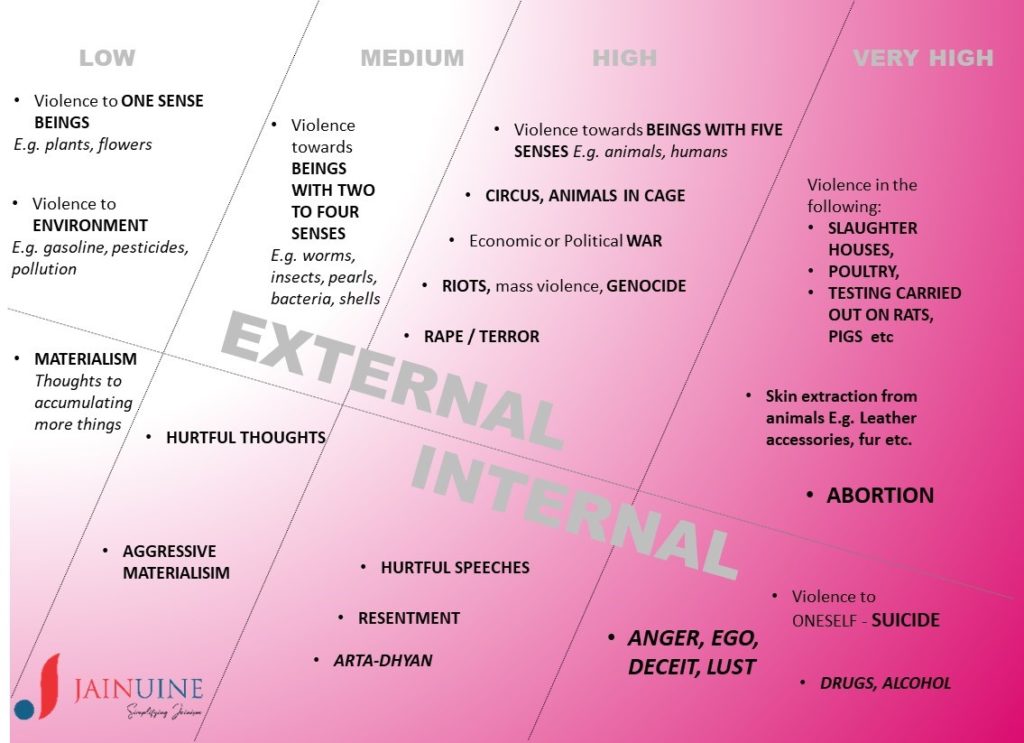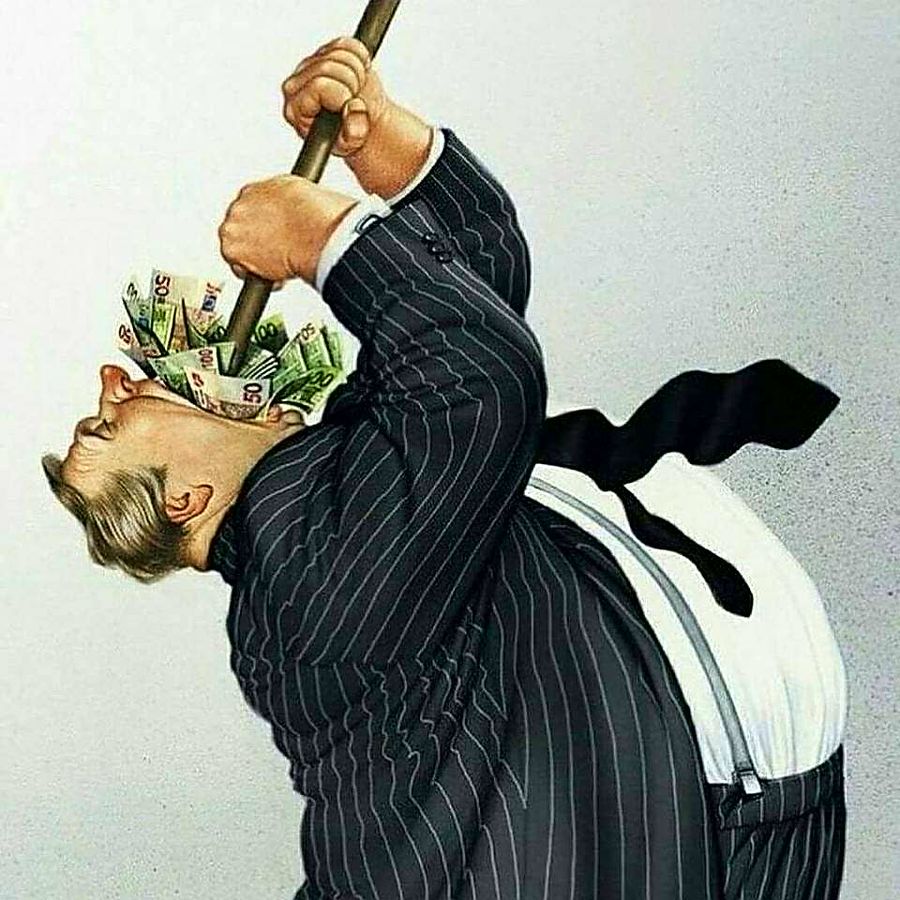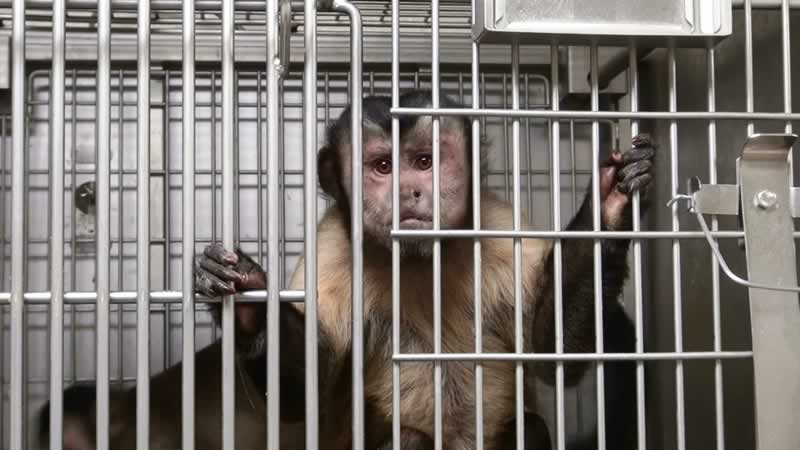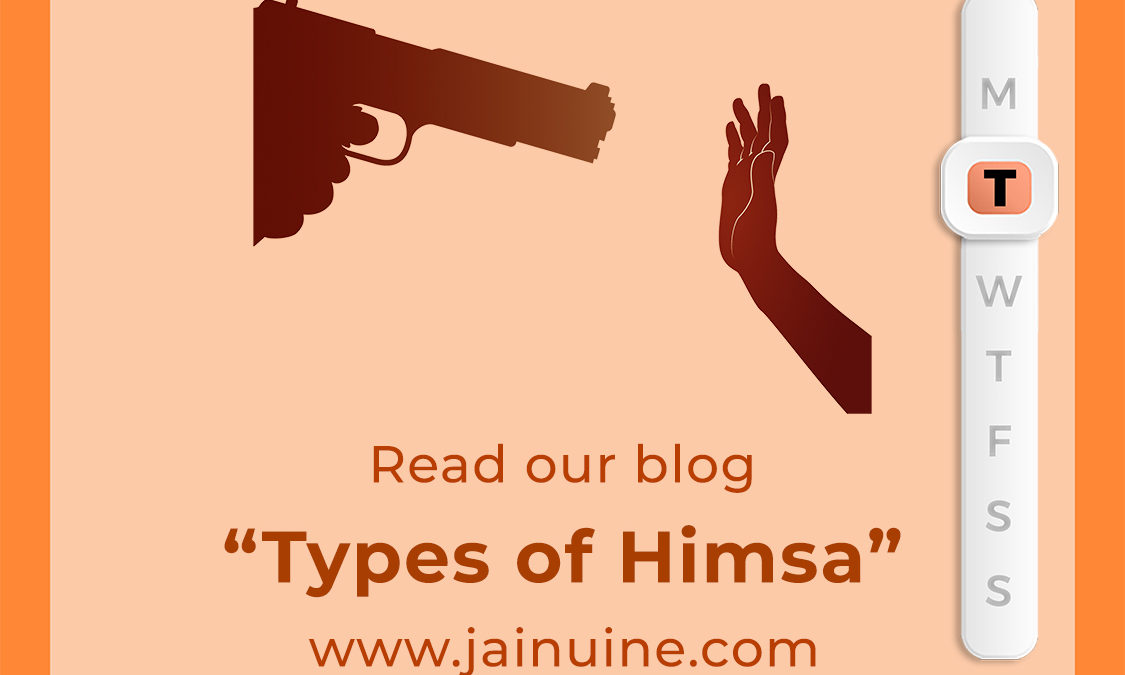
Over the years, Ahimsa has become synonymous with Jainism. This is natural given the importance it finds in Jain philosophy. However, reference of this term Ahimsa is often limited to killing of animals/ humans. Whereas in reality, the Jain conception of ahimsa is quite different from what is commonly understood by violence. Let us dive deeper to know some more aspects of Ahimsa and how it touches our daily activities.
Ahimsa is one of the 12 primary vratas (vows) prescribed for continuous observance in one’s daily life. Since this ahimsa vrata is based on the fundamental principle of avoidance of or abstention of Himsa, it is imperative for us to understand the concept of Himsa as delineated by Jainism.
Dravya (External) & Bhaav (Internal) Himsa
Dravya means any physical thing/ object and Bhaav means intention or feelings. Dravya Himsa will cover any sort of external physical violence. This includes killing of animals, human beings, mosquitos, flies, other insects and pests etc. Apart from killing, any type of physical harm caused to them by hitting, pelting stones at them would also amount to Dravya Ahimsa. Cutting trees, burning down forests and jungles, training animals for circus all of this also forms part of Dravya Himsa.
Similarly Bhaav Himsa would mean intention to hurt/ kill or cause injury to any living being. Even though one may not actually go and kill an animal but the mere thought in one’s mind regarding an act of violence itself construes violence. Whether you think of harming yourself or someone else it would amount to Bhaav Himsa. The violence is defined more by the motives and the consequences to the self rather than by the act itself.
While we are able to classify Himsa as Internal/ External (Dravya/ Bhaav) the impact of it varies significantly based on the form of himsa itself. While some Dravya Himsa might be less cruel or cause less of karma-bandh, other type may be more severe. Similar is the case for Bhaav Himsa. From the image we see that the severity has been split into 4 parts being Low, Moderate, High and Very High. In any scenario, one must not mistake that any violence in lesser severity is allowed and fine to be done. Himsa of any severity should be avoided.
Low Severity:

Dravya Himsa falling in this category would include violence to one sense beings like plants, flower, water etc, and violence towards environment via use of gasoline products, pesticides or anything causing pollution in the environment. Resource consumption of any form falls here as it would inevitably cause harm to the environment and hence should be limited. Bhaav Himsa in this category would include materialism. The thought of accumulating things would eventually take a more serious form of possessiveness and be the reason for causing more violence. Hence, the idea of materialism should be avoided right from the beginning.
Medium Severity

Violence towards beings with two to four senses (viklendriya) like worms, insects, pearls, bacteria, shells and all others are examples of medium severe Dravya Himsa. Hurtful thoughts, severe intention to gather more material things at any cost would be medium severe Bhaav Himsa.
High Severity

A relatively more severe himsa would include violence towards five sense beings (humans, animals etc) which includes animals hurt in circus, caged in zoo, economic and political war, mass violence, genocide, rape cases etc. These are examples of Dravya Himsa. Similarly, hurtful speeches, resentment, artadhyan i.e. excessive worrying about your own well-being are all very severe types of himsa. These types of himsa get classified as Bhaav Himsa. It does not actually cause any physical harm to other living beings, but the intensity of thoughts to commit the violence itself causes highly severe himsa.
Very High Severity
Of all the other types of himsa these classify as very severe and ones that we should avoid at any cost. Violence to 5 sense beings in leather industry, poultry, testing carried out on rats, pigs etc, extracting fur from animals, abortion all these are very severe types of Dravya Himsa which are visible and we must avoid at any cost. Bhaav Himsa falling in this category would primarily be violence to oneself, suicide, remaining under influence of alcohol, drugs or any similar substance, anger, ego, deceit, greed. All these himsa types might seem routine and prima facie not causing any harm, but these are silent killers. One which we can definitely do without.
The above listed types of Himsa gives a perspective and an insight that things like anger, ego which we used daily are as grave as killing animals and equally to be done away with.
Jainuine_admin
Related posts
Today's pick
Hot topics
Stay connected
Notice: Trying to get property 'data' of non-object in /home/jainuine/public_html/wp-content/themes/gillion/inc/widgets/social-counter/views/widget.php on line 36
Notice: Trying to get property 'counts' of non-object in /home/jainuine/public_html/wp-content/themes/gillion/inc/widgets/social-counter/views/widget.php on line 36
Notice: Trying to get property 'followed_by' of non-object in /home/jainuine/public_html/wp-content/themes/gillion/inc/widgets/social-counter/views/widget.php on line 36

